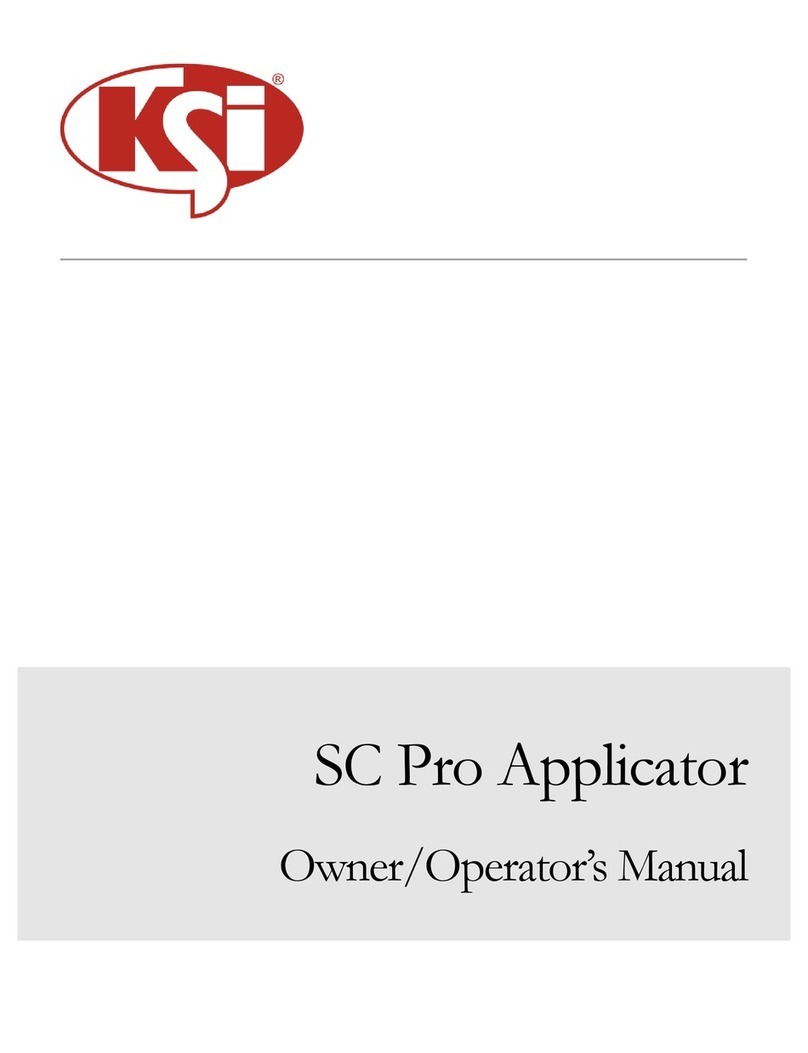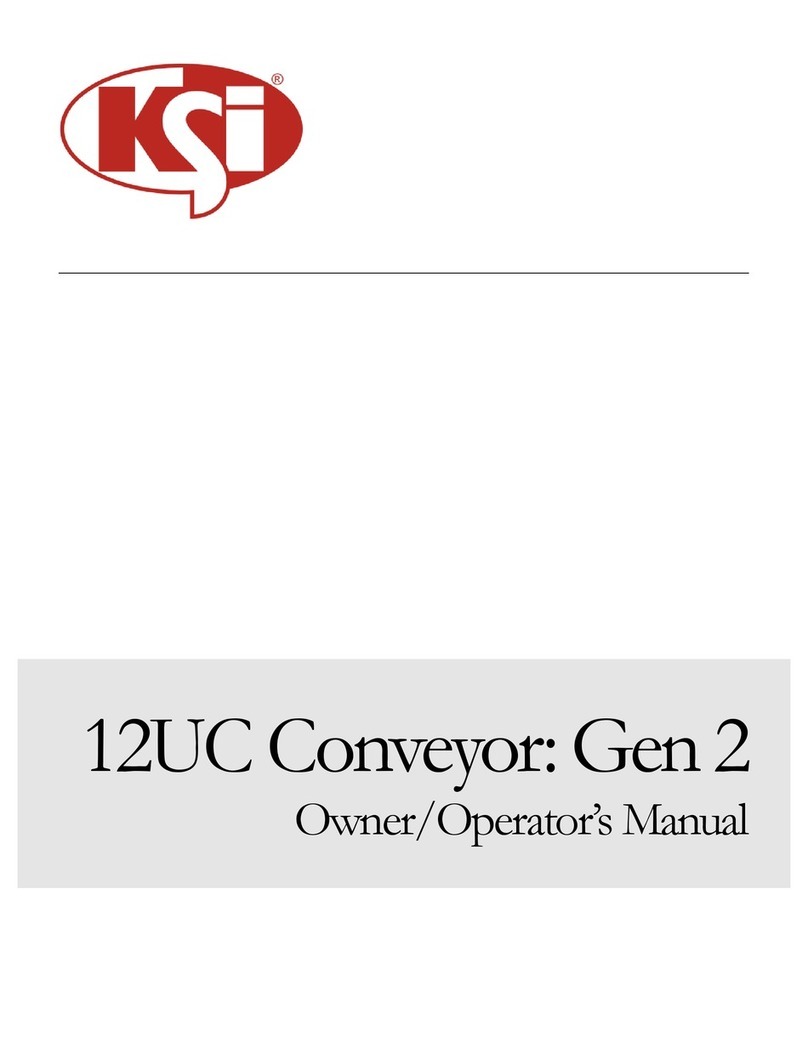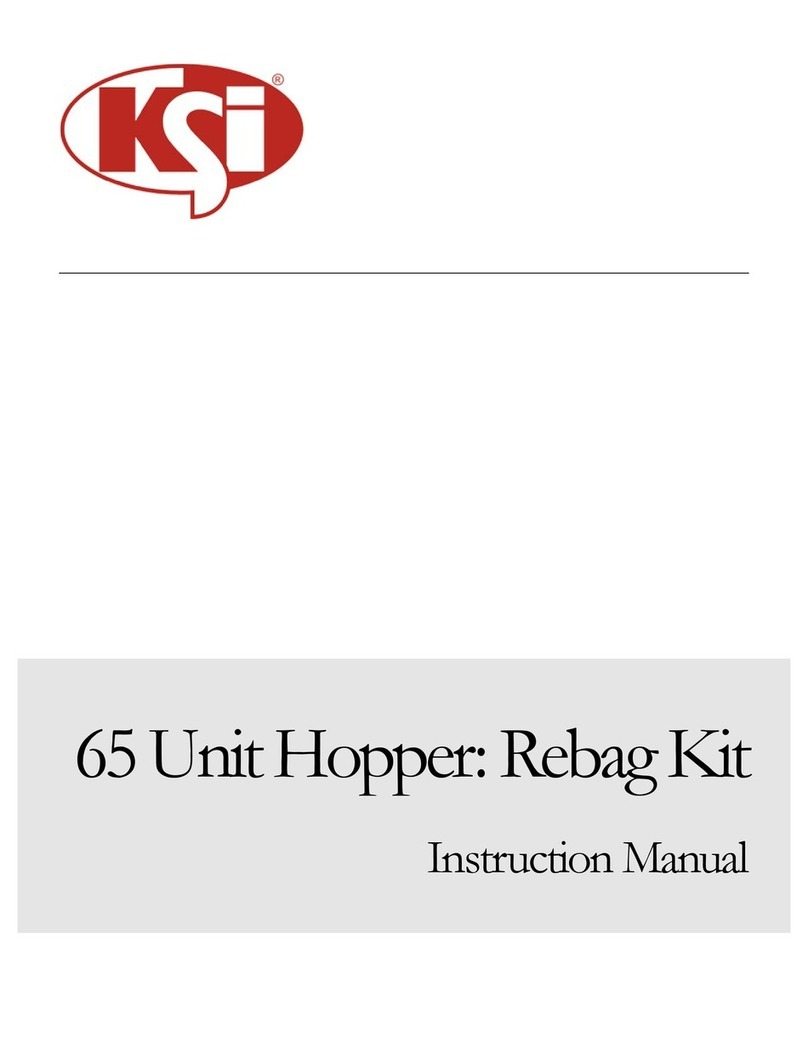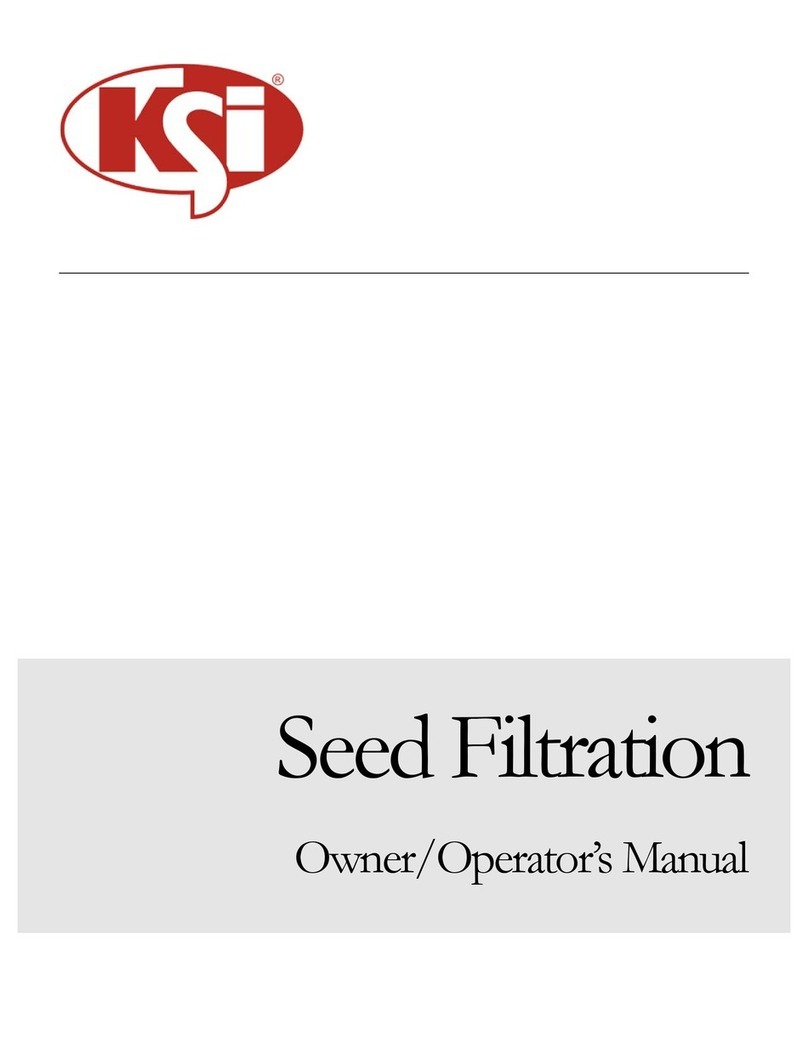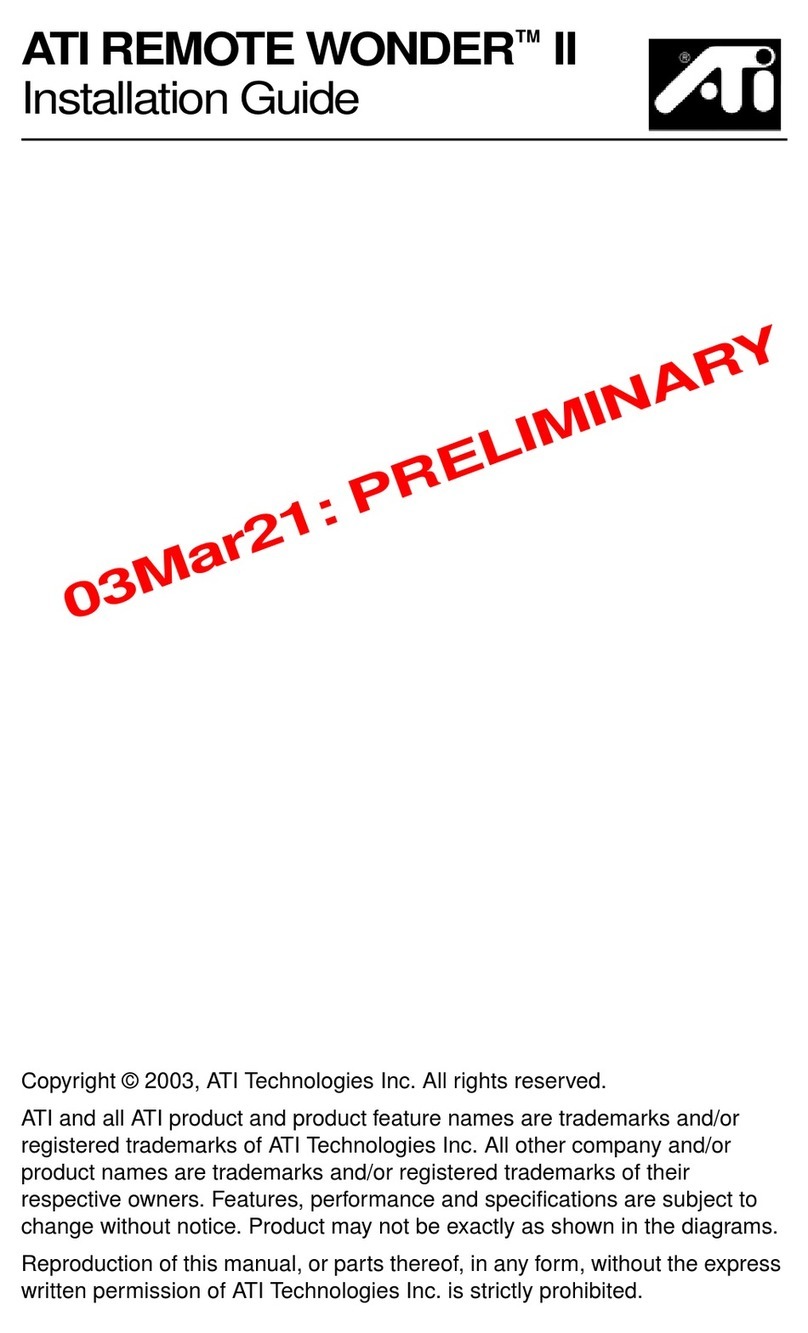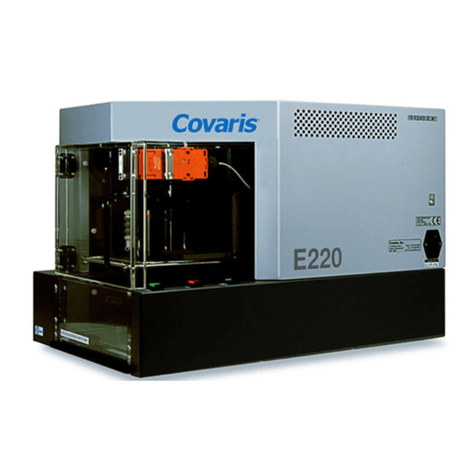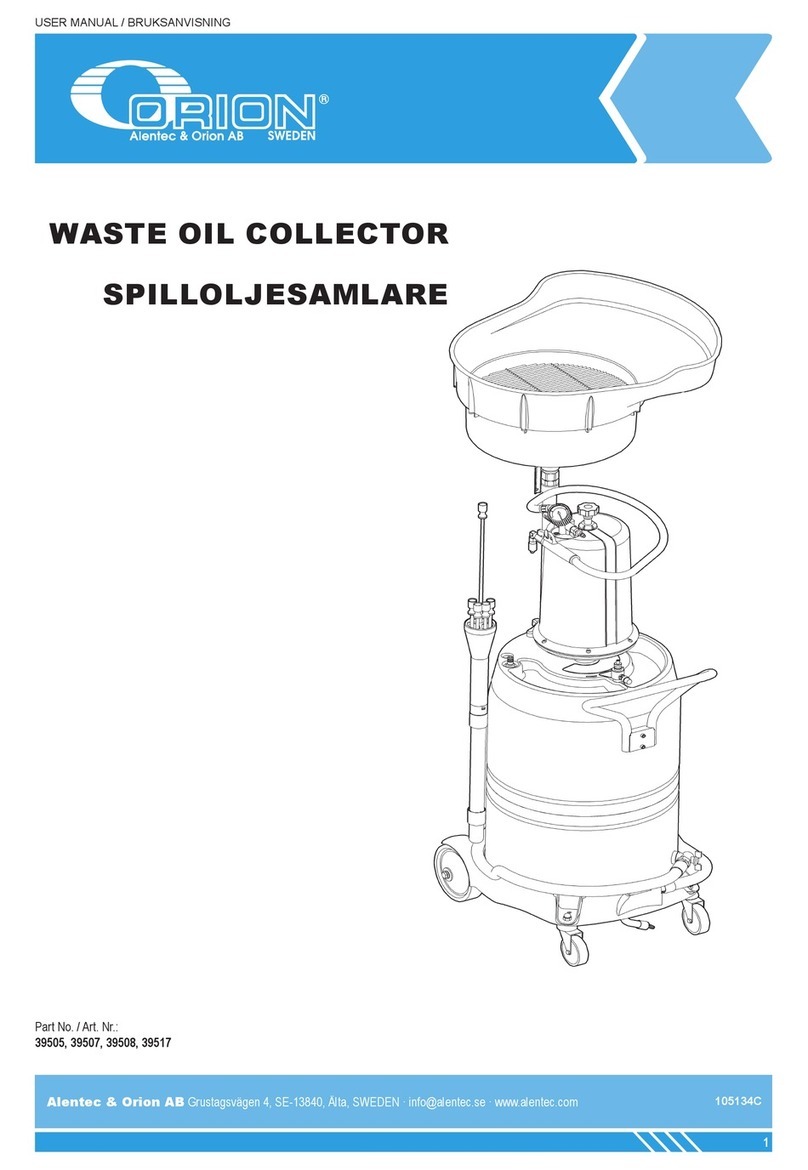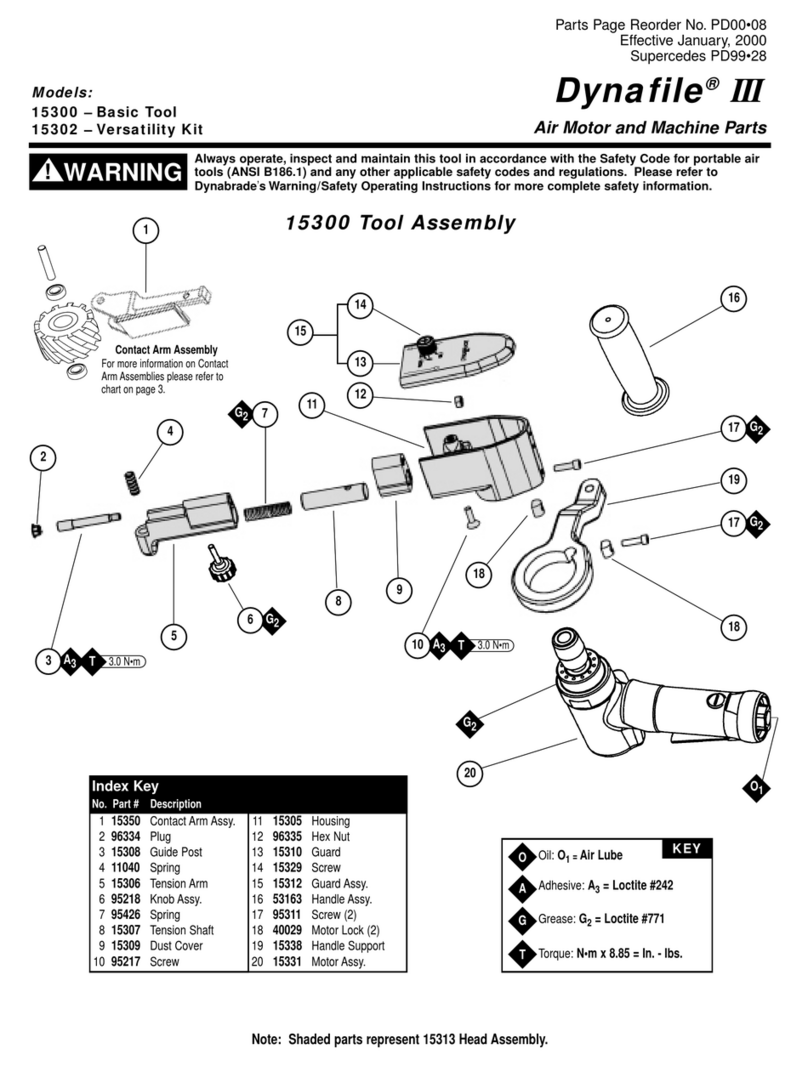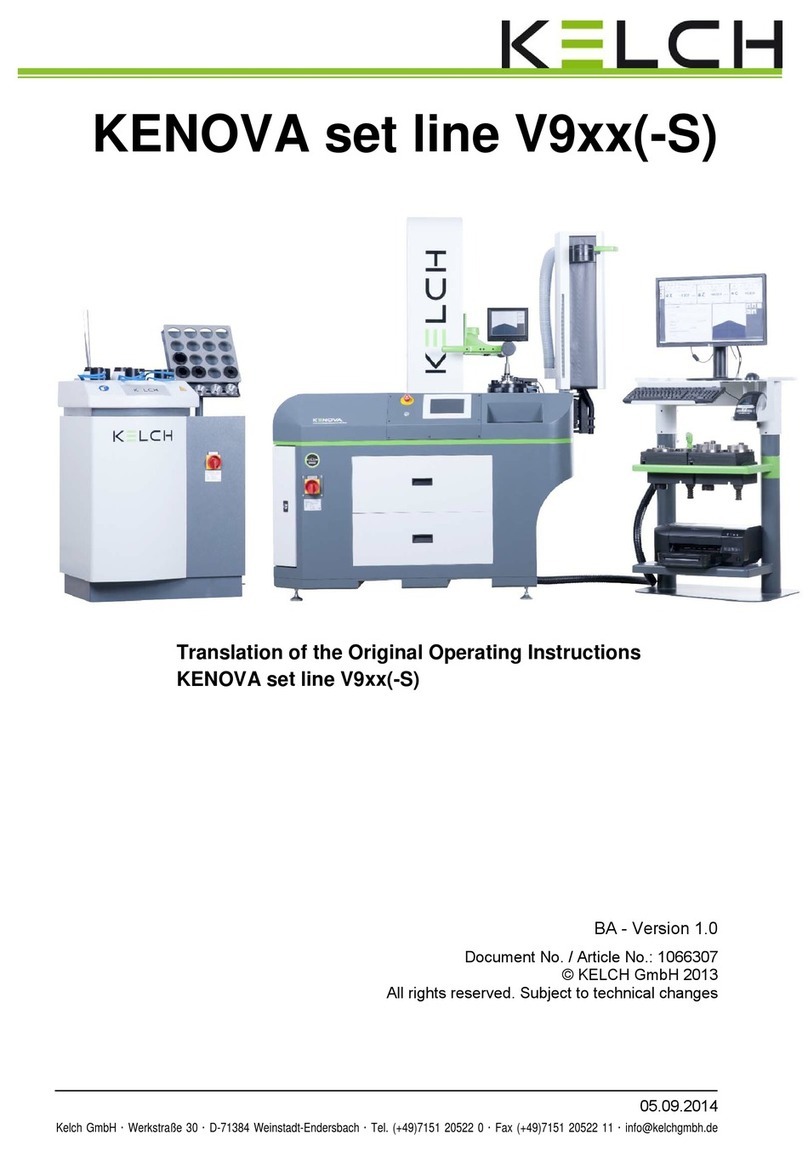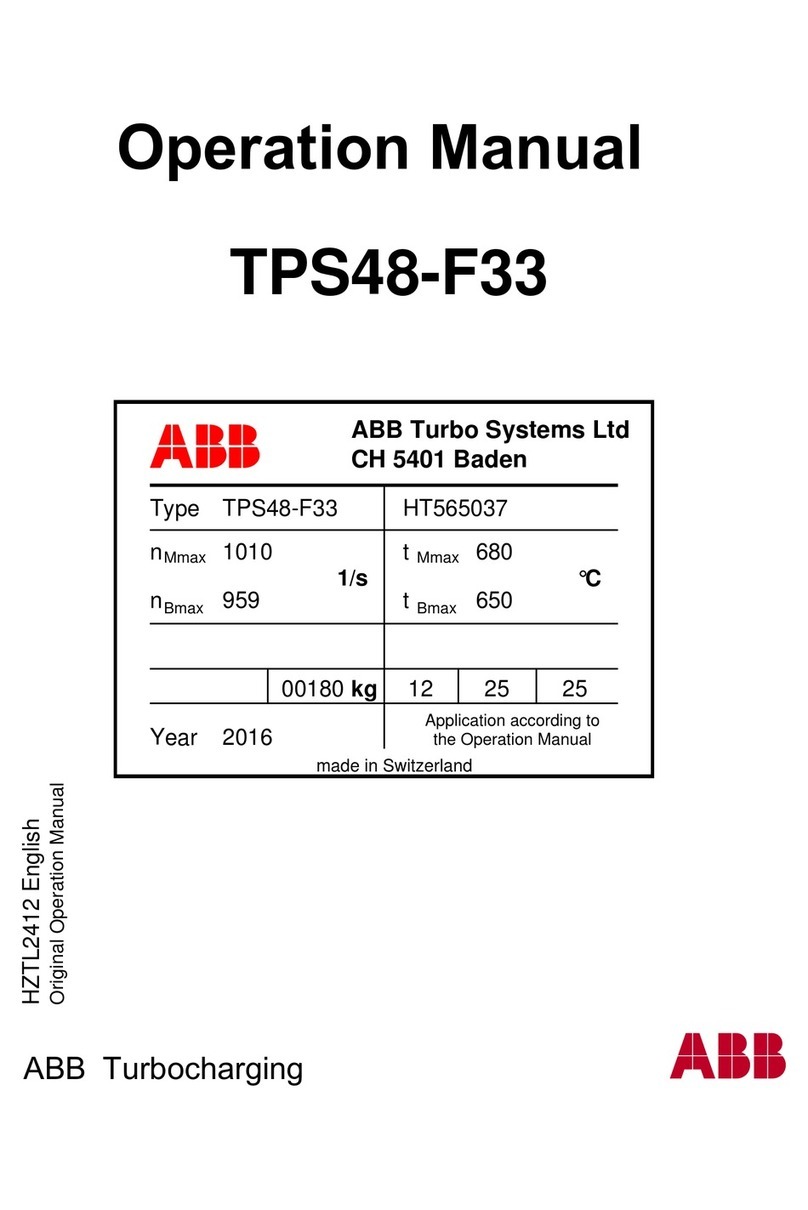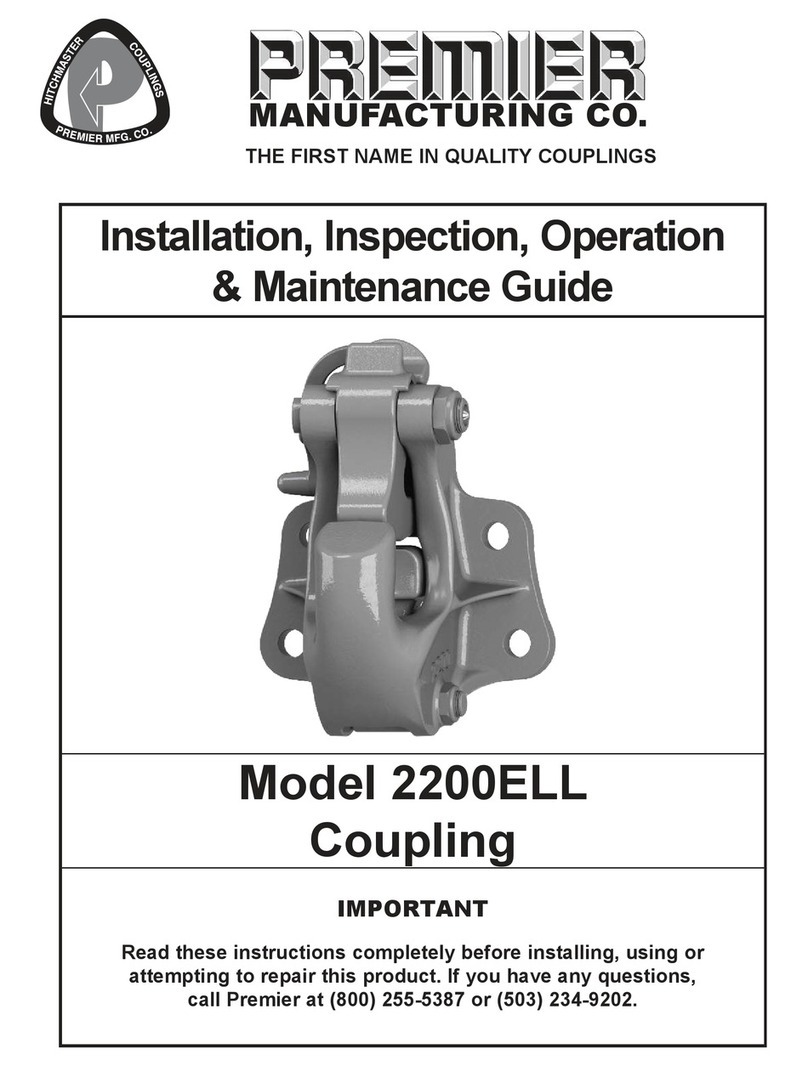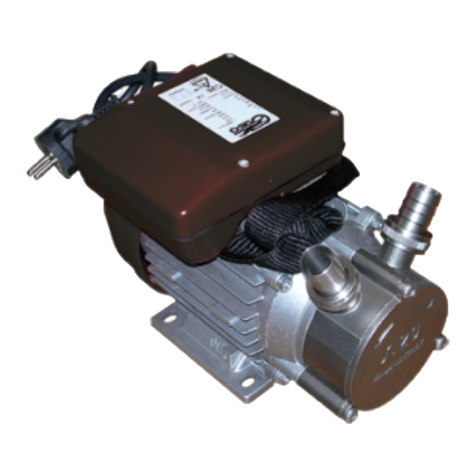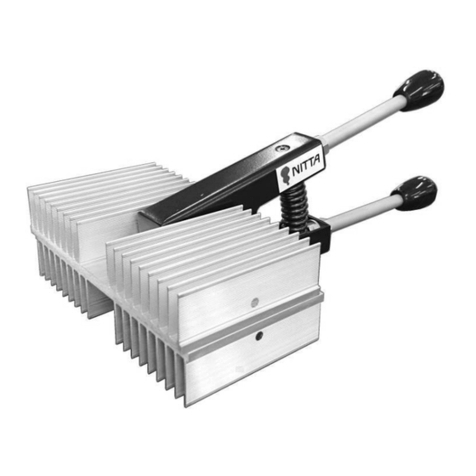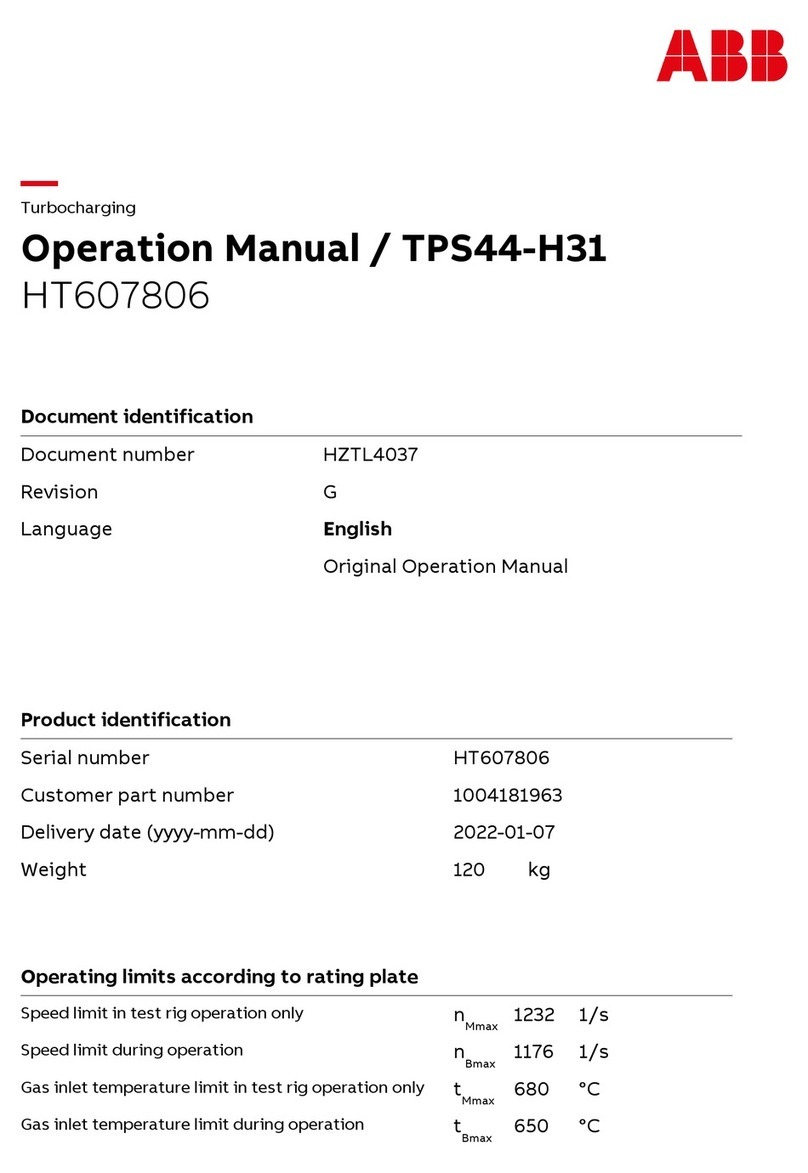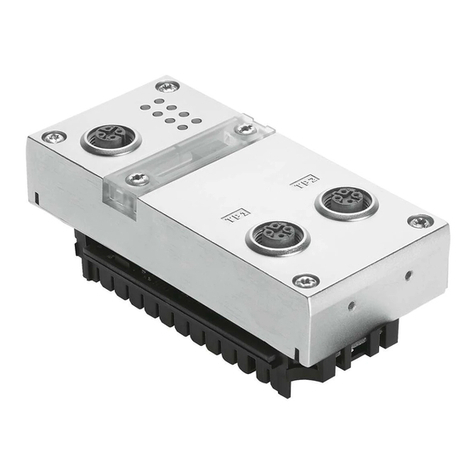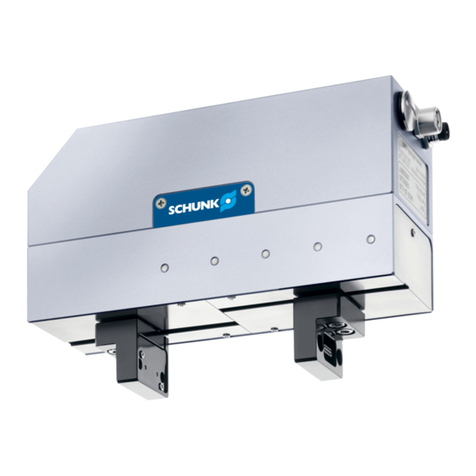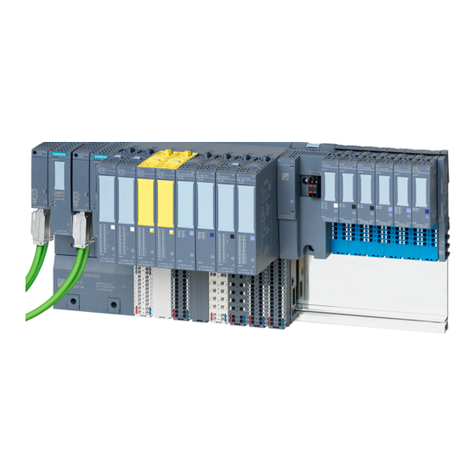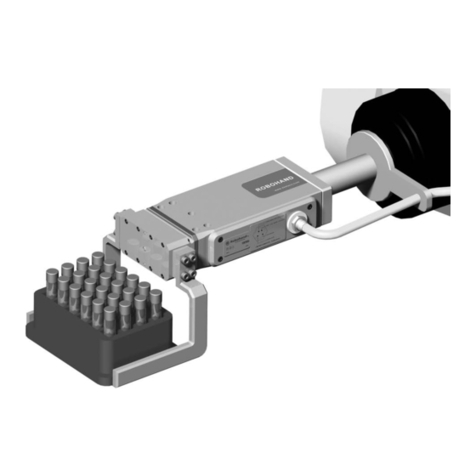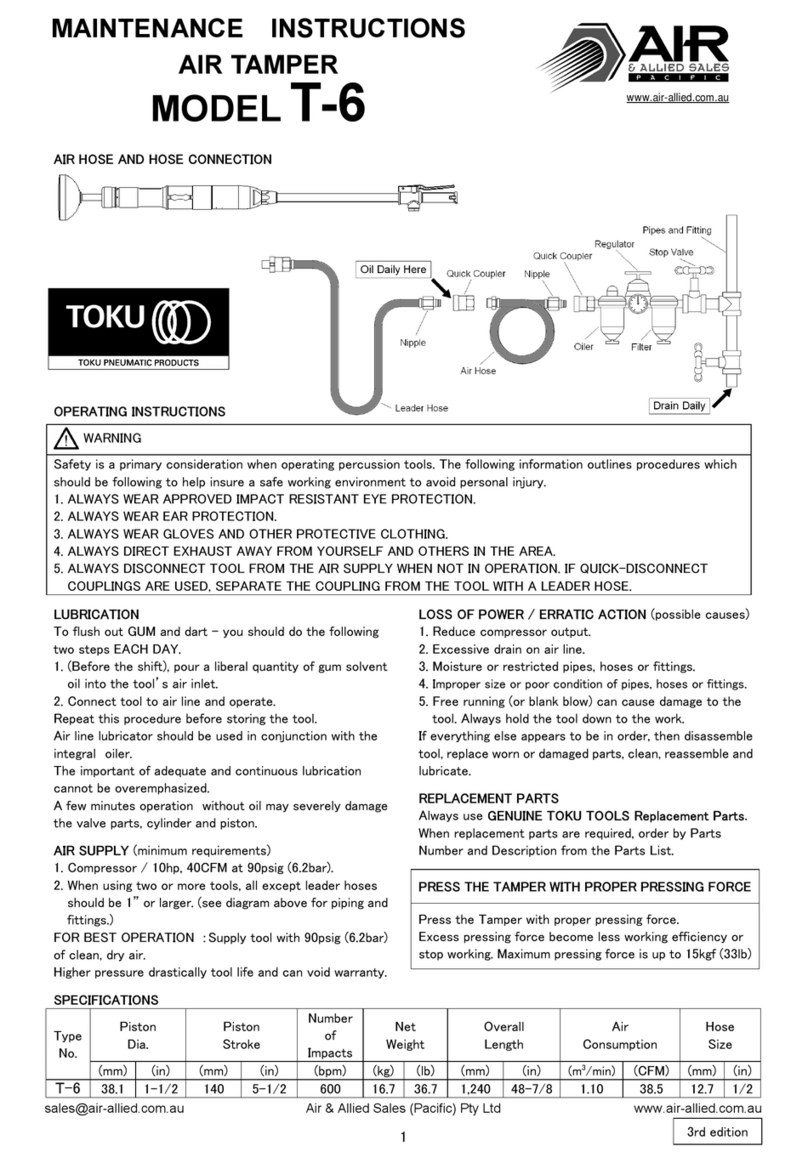KSI ECOTROC ATCN 15-110 User manual

Operating Manual ECOTROC ATCN 15-110
ECOTROC®ATCN 15-110
Operating Manual
Oil Vapour Adsorber
Rev 01_0918

2
Operating Manual ECOTROC ATCN 15-110
Content
1. General information 4
1.1 System data 4
1.2 Contact data 4
1.3 Accompanying documents 4
1.4 Warranty notes 5
1.5 Operating manual 5
1.6 Signs and symbols used 6
2. Intended purpose / use 7
2.1 Intended use 7
2.2 Performance data 8
3. Safety notes 9
3.1 Signs and symbols 9
3.2 Danger zones 10
4. Technical product data 11
4.1 Equipment overview 11
4.2 Function description 12
5. Monitoring the operation 12
6. Transport, storage and setup 13
6.1 Transport 13
6.2 Storage 13
6.3 Setup 14

3
Operating Manual ECOTROC ATCN 15-110
7. Installation 14
7.1 Recommendations for installation 14
7.2 Demands on the installation 15
7.3 Elimination of hazards 15
8. Commissioning 15
8.1 Commissioning prerequirement 15
8.2 Pressurisation 16
8.3 Mains operation 16
8.4 Disconnecting from the mains 16
9. Maintenance 17
9.1 Regular maintenance work 17
9.2 Daily checks 17
9.3 Checking the residual oil content 18
9.4 Overview of maintenance parts 21
9.5 Replacing the filter element 21
9.6 Replacing the active carbon 22
10. Faults 23
11. Manufacturer‘s declaration 24

4
Operating Manual ECOTROC ATCN 15-110
1. General information
Please complete the following information according to the type plate, vessel plate and contract documents.
This enables the manufacturer to clearly identify the dryer and makes it easier to give advice if there are que-
ries. It also simplifies the provision of spare parts and support. This may correspond to separate pieces of
equipment for the individual devices.
1.1 System data
Model:
Order No.:
Vessel No.:
Serial number:
Year of manufacture:
Date of commissioning:
1.2 Contact data
Company:
Address:
Phone:
Email:
1.3 Accompanying documents
Applicable documents which are not provided with this documentation:
• container documents
• installation drawing
• documentation for additional equipment parts.

5
Operating Manual ECOTROC ATCN 15-110
1.4 Warranty notes
For the conditions necessary for compliance with the warranty, please refer to our „General Terms of Sale and
Delivery“
The warranty shall be void if:
• The oil vapour adsorber is used for anything other than its intended use.
• The instructions in this operating manual are not observed.
• External influences (e.g. aggressive substances) cause damage to the oil vapour adsorber.
• Maintenance intervals are not adhered to.
• Damage is caused due to incorrect or defective maintenance.
• The oil vapour adsorber is operated although defects are evident.
• An unfavourable or incorrect installation is selected.
1.5 Operating manual
This operating manual will help clarify any outstanding questions concerning the setup, installation, operation,
maintenance, repair and disposal of the dryer. It contains useful tips and advice.
It is not only written for the operator who is responsible for monitoring the daily operation of the device, but
also for the service personnel who performs the installation and service. Maintenance and repair work may only
be carried out by qualified personnel!
This operating manual must be read before any installation and maintenance work is started. All safety instruc-
tions must be observed!
The operating manual must be kept in the vicinity of the dryer.
As already mentioned in the warranty notes, the manufacturer accepts no liability for damages resulting from
disregard of the operating manual.

6
Operating Manual ECOTROC ATCN 15-110
1.6 Signs and symbols used
The following symbols are listed in this manual and /or are affixed to the oil vapour adsorber:
Tip
This symbol indicates tips for the efficient use of the oil vapour adsorber!
Caution / Warning
This symbol indicates general hazards or dangerous situations.
Slip hazard
This symbol warns of the risk of slipping.
Wear ear protectors
Note
This symbol indicates instructions for the safe handling of the oil vapour adsorber.
Danger! Compressed air
This symbol warns of dangers due to compressed air.
Wear respiratory protection
Wear goggles
These three symbols point out the necessity to wear personal protective equipment.

7
Operating Manual ECOTROC ATCN 15-110
2. Intended purpose / use
The oil vapour adsorber is designed to be used to reduce the oil vapour fractions in the compressed air and
reduce odorous and aromatic substances in industrial compressed air systems. It requires the supply of com-
pressed air from a supply source.
The main task is to reduce vaporous oil fractions in the compressed air. Upstream filters and dryers ensure that
only particles and drop shapes are separated.
By applying the pretreatment process of the active carbon which is specifically designed for this purpose, the
long-chain hydrocarbons from the compressed air are stored in the open pores of the active carbon and the oil
fraction of the compressed air is reduced to a minimum. Compressor oils are perfectly absorbed by the active
carbon. Should you want to absorb other substances, please contact the manufacturer.
2.1 Intended use
The oil vapour adsorber is exclusively designed for cleaning compressed air! If the oil vapour
adsorber is to be used with other gases, this must be agreed with the manufacturer. Other
safety guidelines may apply here!
The oil vapour adsorber must be set up at a site indoors:
• which is suitable for the weight,
• weatherproof (exposure to sun should be avoided),
• dry,
• frost-free,
• vibration-free,
• not in potentially explosive atmospheres,
• which can be accessed for maintenance and servicing.
The oil vapour adsorber must only be operated within the allowable operating conditions. The-
se are defined on the type plate and vessel plate. Any other use is considered improper and
the manufacturer accepts no liability.
The oil vapour adsorber must not be converted in any way and its components must not be
modified. The use of components other than the original ones from the manufacturer is not
permitted, unless this has been agreed with the manufacturer.
The values shown on the vessel plate are the maximum permissible values as per the pressure
equipment directive. These values are not directed at the operating conditions. The maximum
operating conditions can be found on the type plate of the oil vapour adsorber.
For the nominal performance data of the oil vapour adsorber, please refer to the Section „Per-
formance data“.

8
Operating Manual ECOTROC ATCN 15-110
Routine inspections must be carried out on the pressure vessels. The operator is solely res-
ponsible for the registration. Regional or national regulations may apply in addition. Please
also refer to the additional vessel documentation!
Exceeding or even significantly undercutting the design data can lead to bad residual oil con-
tents!
The compressed air supplied to the device must be of the following quality:
• free from aggressive and corrosive substances
• free from particles and solids
• dry (technically dry)
• within the temperature conditions for the design.
In principle, the oil vapour adsorber can also be operated without any pre-treatment, but this
may be detrimental to the service life of the active carbon. Moisture and particles are stored in
the open pores and reduce the adsorption capacity of the active carbon.
Where temperatures are above 55°C, previously collected oil can be released again!
2.2 Performance data
The performance data of the individual types of devices is shown in the table below. The data is based on the
operating conditions of the compressed air temperature + 35°C and 7 bar operating pressure, and a moisture
content < 30%.
ATCN 15
ATCN 18
ATCN 22
ATCN 34
ATCN 45
ATCN 55
ATCN 75
ATCN 90
ATCN 110
150
180
210
340
480
600
820
1000
1200
1“
1”
1”
1 ½”
1 ½”
1 ½”
2”
2”
2”
1307
1422
1546
1531
1631
2091
1895
2195
2295
355
355
355
460
460
460
595
603
603
650
650
650
716
716
716
865
865
865
85
94
101
188
201
261
393
471
497
Type Volume flow
rate
m3/h
Connection
Inch
Height
mm
Width
mm
Depth
mm
Weight
Kg
related to 1 bar(a) and 20°C

9
Operating Manual ECOTROC ATCN 15-110
3. Safety notes
The ATCN oil vapour adsorbers have been built according to state-of-the-art technology and the latest safety
regulations. However, there is still a risk of danger during operation, maintenance, installation and servicing,
and during transport and setup. In particular, the disregard of safety regulations when handling compressed
air may result in serious injury or death. Expertly trained personnel and those trained in safety should therefore
only use the system.
• Observe the safety notes in this manual and on the adsorber.
• Observe all safety notes, even those in the individual chapters.
• Observe all legal guidelines and safety regulations (the latter may vary from region to
region!)
• Observe all local site regulations which are stipulated for the field of application.
3.1 Signs and symbols
The following signs are affixed to the adsorber:
• Vessel plate (on the front underneath the pressure gauge); it includes details of the year of manufacture,
vessel number, max. permissible temperature, maximum permissible pressure, volume, min. tempera-
ture, test pressure and test date.
• Type plate (on the right side of the vessel); it shows details of the type, year of manufacture, serial num-
ber of the device, performance data, weight and filters installed.
Vessel plate
Type plate
The type plates on the device show important information. Please make sure that they are always legible and
that they can be accessed.

10
Operating Manual ECOTROC ATCN 15-110
3.2 Danger zones
Risk from pressure-bearing
parts
Risk of slipping due to spilt active carbon on
the floor
• Never operate the oil vapour adsorber outside of the load limits shown on the vessel
plate.
• Never carry out work as long as the oil vapour adsorber is under pressure.
• Do not modify the structure of the oil vapour adsorber or change its function.
• Only use the oil vapour adsorber for its intended purpose.
• Do not climb onto the device.
• Do not carry out welding work on pressure-bearing parts.
• Wear respiratory protection and eye protection when changing the active carbon.
• Risk of slipping due to spilt active carbon.
• Always check that the indicator pipe is secure before you open the needle valve and
remember to wear eye protection.
• Never operate the device if there is apparent damage.
• Avoid sparks and naked flames in the vicinity of the active carbon as it is combustible.
• Never lift the oil vapour adsorber by the equipment parts, only use the lifting lugs.
Active carbon
The active carbon used does not fall into the hazardous substances group and is therefore not subject to label-
ling requirements. Nevertheless, please observe all common safety measures with regard to using chemicals.
Please also note that the material accumulates contaminants, in particular oil. This can cause additional dan-
gers.
Should you require further information, contact the manufacturer to obtain a copy of the safety datasheet.

11
Operating Manual ECOTROC ATCN 15-110
4. Technical product data
4.1 Equipment overview
1 Compressed air inlet
2 Compressed air outlet
3 Filling and draining nozzle
4 Pressure gauge
5 Vessel plate
6 After-filter
7 Manual drain cock
8 Type plate
1 Compressed air inlet
2 Lifting lugs
3 Pressure gauge
4 Vessel plate
5 Final-filter
6 Filling and draining nozzle
7 Oil check indicator

12
Operating Manual ECOTROC ATCN 15-110
4.2 Function description
From the filled adsorbent material, (active carbon in this case), oil vapours and odorous and
aromatic substances are stored in the open pores of the active carbon, thus reducing its con-
tent in the compressed air.
Through the joining pipe and possible pre-treatment, the compressed air is fed via the inlet
into the diffuser (flow distributor and sieve). The compressed air is hereby distributed over the
whole vessel cross-section for optimum efficiency. Based on the laws of physics and a prede-
termined contact time, the abovementioned contaminations are stored in the open pores of
the active carbon. The cleaned air then exits the vessel again through a sieve on the outlet.
As the temperatures rise, the performance of the active carbon is reduced since the hydrocar-
bon chains (oils) become shorter and shorter and cannot be absorbed as effectively.
The contaminations collected in the active carbon gradually saturate the material. It cannot be
regenerated in the process and must be replaced. With the appropriate compressed air quality
at the inlet, it is possible for the service life to exceed 10,000 hours.
5. Monitoring the operation
The following components are provided for regular monitoring:
The pressure gauge shows the operating pressure.
The oil check indicator is used to regularly measure
the residual oil. The needle valve is
only opened for the duration of the measurement. Based on
the discolouration, the indicator provides information about the saturation
of the active carbon.

13
Operating Manual ECOTROC ATCN 15-110
6. Transport, storage and setup
6.1 Transport
Although great care is taken, please check immediately whether the adsorber has been damaged in any way.
Any kind of transportation damage must be pointed out immediately to the deliverer and manufacturer.
• Suitable hoisting equipment must be provided for the transportation, loading and unloading process.
• The device must only be lifted at the designated points: crane hook or transport pallet.
• Take the weight of the adsorber into account and provide suitable assistive equipment.
• Secure the adsorber against tilting using suitable means.
• Do not remove the packaging material until the device is
moved to its place of installation.
• Only appropriately qualified personnel may carry out the
abovementioned tasks.
• Observe all regulations on accident prevention.
6.2 Storage
If the device needs to be stored before being commissioned, ensure that the storage site ful-
fills the following requirements:
• indoors only
• dry
• frost-free
• protected against weather impact.
If the device is stored after having been commissioned, please proceed as follows:
• Depressurise the adsorber.
• Disconnect the adsorber from the compressed air system.
• Close the compressed air inlet and outlet.
Lifting lug

14
Operating Manual ECOTROC ATCN 15-110
7. Installation
7.1 Recommendations for installation
Proper installation is the basic prerequisite for the safe and problem-free operation of the
ATCN series.
We recommend the installation of shut-off devices both upstream and downstream of the ad-
sorber. The adsorber can thereby be disconnected from the compressed air system during
maintenance.
If operation cannot be interrupted during maintenance then a by-pass line must be provided.
It should at least include a active carbon filter to prevent a contamination of oil downstream
of the adsorber.
We recommend installation after a corresponding pre-treatment. The oil vapour adsorber is
usually installed behind an air cauldron and dryer (compressed air refrigeration dryer or ad-
sorption dryer).
A filter with a separation degree of 0.01 µ must be installed immediately in front of the oil
vapour adsorber to collect any possible additional liquid drops and solids which would other-
wise cause the active carbon to become saturated more quickly.
Installing the device behind an air cauldron also has the advantage in that pulsating com-
pressed air is buffered and the temperature at the inlet of the adsorber is lower.
Choose a place of installation with the lowest possible compressed air temperature and with
the highest level of dry air. This then increases the service life of the active carbon and the
adsorber works most efficiently.
6.3 Setup
Please refer to the setup conditions described in Section 2.1. The basic data required for the
setup can be found in the Performance data in Section 2.2.
When setting up, make sure
• that the ground is level and capable of carrying the weight. Please also take into
account that the vessel will be filled with water during the routine inspection.
• there is enough space around the adsorber to carry out the servicing and maintenance
work. We recommend at least 0.8m.
• that the adsorber can be reached and accessed by the lifting gear.
• taht the adsorber is not accessible to non-experts, or warning signs should be affixed
for inexperienced persons.
• the adsorber cannot be rammed by haulage vehicles.
• the signage is clearly visible at all times.
There are mounting holes in the base section of the adsorber. These should be used to anchor
the device into the ground, as long as the ground allows it.

15
Operating Manual ECOTROC ATCN 15-110
Prior to installation, check the following points:
• The compressed air system and the adsorption dryer must be free from pressure.
• For compressed air systems which need to remain under pressure, shut-off devices
have to be protected against unintentional opening.
• The operating pressure in the system cannot be higher than the maximum permissible
overpressure of the adsorber.
• There must be no pressure surges in the system in the adsorber (e.g. from valves which
open abruptly).
• The pipelines are designed for the operating pressure, nominal width and volume.
• No possible vibration transmission or vibration.
• No residue left in the pipeline from mechanical processing.
7.2 Demands on the installation
8. Commissioning
• Do not work on parts which are under pressure.
• The pipelines must held in place with brackets, the adsorber is not designed to act as
a support for the pipes.
• The adsorber must only be used in the predetermined operating conditions (see vessel
plate), it is the operator‘s duty to observe these values.
All work on ATCN adsorbers and on the feeder and drainage systems must only be carried out
by expertly trained persons and by those with experience in the field of compressed air!
7.3 Elimination of hazards
Please be aware of the risks associated with the installation of the device:
8.1 Commissioning prerequirement
The following points must be checked immediately prior to commissioning:
• The maximum operating values must not be exceeded.
• Upstream and downstream shut-off devices are closed.
• All connections and screw connections are secure. Check this and tighten if necessary
using a suitable tool.
• Visually check again for any signs of damage. Do not use the adsorber if it is damaged
in any way.

16
Operating Manual ECOTROC ATCN 15-110
Should you have to disconnect the oil vapour adsorber from the mains, e.g. for a maintenance
operation, make sure that this work is only carried out when the device is free from pressure.
Wear your personal protective equipment. Proceed as follows:
1. Close the cut-off valves at the inlet and outlet of the adsorber.
2. Open the manual drain on the after-filter housing.
3. Keep an eye on the pressure gauge and wait until it displays „0“ bar before starting
work.
4. Then close the manual cock again.
The oil vapour adsorber is now disconnected from the mains.
8.2 Pressurisation
Only once you‘ve successfully completed all of the checks listed in Section 8.1 can you perform
the following steps in the specified order.
Wear ear protection for this as the flow noise can get very loud.
1. Make sure that the compressed air system is under pressure upstream of the adsorber.
2. Slowly open the cut-off valve upstream of the adsorber until you hear the flow noise.
3. Keep an eye on the pressure gauge on the vessel. Pressurisation must rise slowly.
4. At 4 bar close the inlet shut-off device again. Check all connections for leaks. If leaks are
found, the adsorber must be rendered pressureless again and the leaks must be re-
paired.
5. If no further flow noises can be heard and if the pressure gauge does not indicate any
further increase in pressure, you can open the cut-off valve completely.
Pressurisation has been successful. Check whether the compressed air system downstream of
the adsorber can be opened safely. Then proceed as follows:
1. Slowly open the cut-off valves at the outlet of the adsorber until you hear the flow noise.
2. Keep an eye on the pressure gauge. Should the pressure suddenly drop, check whether
any tapping points are still open.
3. If the pressure remains stable and you no longer hear any flow noise, the cut-off valve
downstream of the adsorber can be opened completely.
4. The oil vapour adsorber is now ready for operation.
8.3 Mains operation
Manual drain cock
8.4 Disconnecting from the mains

17
Operating Manual ECOTROC ATCN 15-110
9. Maintenance
Adsorber and filters
Oil check indicator
Oil check indicator
After-filter element
Active carbon
Seals
Sieves
Visual check, functional
check
Residual oil content
measurement
Replace pipe if discoloured
Replace the filter element
Replace
Replace
Clean, replace if necessary
X
if necess.
X
if necess. if necessary
X
recomm. after
4000 operating hrs / 1 year
X
X
9.2
9.3
9.3
9.5
9.6
9.6
9.7
Maintenance of Activity Daily Monthly Annually Chapter
Maintenance work may only be carried out by suitably qualified personnel! Make sure that the
device is free from pressure before starting work and observe the applicable accident preven-
tion regulations for the place of installation!
9.1 Regular maintenance work
The following table gives an overview of the intervals and scope of the maintenance work:
9.2 Daily checks
The following points should be checked every day:
• The difference in the operating pressure upstream and downstream of the adsorber is not more than
0.5 bar.
• Open the manual drain cock slightly on the after-filter. It must not drip.
• Check if you can hear any unusual or loud noises.
• Check for leaks.
• If prefilters are installed, check that the condensate drains work properly.

18
Operating Manual ECOTROC ATCN 15-110
9.3 Checking the residual oil content
The residual oil content should be measured on a regular basis. Proceed as follows:
1. Check that the indicator pipe is secure.
2. Record the date and time when measurements start.
3. Record the operating pressure (it should be constant during the
measurement).
4. Record the scale value where the obvious red discolouration can al-
ready be seen. (ignore any slight pink-coloured discolouration)
5. Open the needle valve completely.
6. Allow the measurement to run its course until there is a discoloura-
tion of a scale unit of at least 0.2. Use the following tables with the
corresponding measurement pressure to determine the ppm con-
tent for the corresponding measurement time.
7. If your measurement value is within the table values (e.g. 0.5 scale units are discoloured), you can interpo-
late this value.
8. Multiply this value by 1.2 to obtain the residual oil content in mg/m³.
9. Also assess the discolouration rate by recording the values at regular intervals. This provides you with in-
formation about the service life of the active carbon.
10. You can use the test pipe until it is completely discoloured, then replace it.
11. An example at the end of the table clarifies the selection.
12. Close the needle valve again. If more measurements need to be taken, continue to measure from the obvi-
ous red discoloured area.
13. Replace the completely discoloured test pipe when the device is depressurised.

19
Operating Manual ECOTROC ATCN 15-110
4
4,5
5
5,6
6,3
7,2
8,4
10
12,5
16,6
25
33
50
56
63
72
84
100
125
166
250
500
1000
0,548
0,496
0,452
0,404
0,358
0,312
0,270
0,224
0,180
0,136
0,090
0,068
0,045
0,040
0,036
0,032
0,027
0,023
0,018
0,014
0,009
0,004
0,002
1,096
0,992
0,904
0,808
0,716
0,624
0,540
0,448
0,360
0,272
0,180
0,136
0,090
0,079
0,072
0,064
0,055
0,045
0,036
0,028
0,018
0,009
0,004
1,644
1,488
1,356
1,212
1,074
0,936
0,810
0,672
0,540
0,408
0,270
0,204
0,135
0,119
0,109
0,096
0,082
0,068
0,055
0,041
0,026
0,013
0,006
2,192
1,984
1,808
1,616
1,432
1,248
1,080
0,896
0,720
0,544
0,360
0,272
0,180
0,158
0,145
0,128
0,110
0,090
0,073
0,055
0,035
0,018
0,008
2,740
2,480
2,260
2,020
1,790
1,560
1,350
1,120
0,900
0,680
0,450
0,340
0,225
0,198
0,181
0,160
0,137
0,113
0,091
0,069
0,044
0,022
0,010
3,288
2,976
2,712
2,424
2,148
1,872
1,620
1,344
1,080
0,816
0,540
0,408
0,270
0,238
0,217
0,192
0,164
0,136
0,109
0,083
0,053
0,026
0,012
3,836
3,472
3,164
2,828
2,506
2,184
1,890
1,568
1,260
0,952
0,630
0,476
0,315
0,277
0,253
0,224
0,192
0,158
0,127
0,097
0,062
0,031
0,014
4,384
3,968
3,616
3,232
2,864
2,496
2,160
1,792
1,440
1,088
0,720
0,544
0,360
0,317
0,290
0,256
0,219
0,181
0,146
0,110
0,070
0,035
0,016
Dauer
in h 0,2 0,4 0,6 0,8 1,0 1,2 1,4 1,6
Wert auf der Skala
Table for measurement
pressure greater than
7 bar(g), residual oil
content in ppm
Table for measurement
pressure 6 bar(g),
residual oil content in
ppm
4
4,5
5
5,6
6,3
7,2
8,4
10
12,5
16,6
25
33
50
56
63
72
84
100
125
166
250
500
1000
0,640
0,580
0,524
0,454
0,416
0,364
0,312
0,266
0,210
0,160
0,105
0,0,78
0,053
0,047
0,042
0,037
0,032
0,027
0,020
0,016
0,011
0,005
0,003
1,280
1,160
10,48
0,908
0,832
0,728
0,624
0,532
0,420
0,320
0,210
0,156
0,106
0,093
0,083
0,074
0,064
0,054
0,041
0,032
0,021
0,010
0,005
1,920
1,740
1,572
1,362
1,248
1,092
0,936
0,798
0,630
0,480
0,315
0,234
0,158
0,140
0,125
0,110
0,096
0,080
0,061
0,048
0,032
0,016
0,008
2,560
2,320
2,096
1,816
1,664
1,456
1,248
1,064
0,840
0,640
0,420
0,312
0,211
0,186
0,166
0,147
0,128
0,107
0,082
0,064
0,042
0,021
0,010
3,200
2,900
2,620
2,270
2,080
1,820
1,560
1,330
1,050
0,800
0,525
0,390
0,264
0,233
0,208
0,184
0,160
0,134
0,102
0,080
0,053
0,026
0,013
3,840
3,480
3,144
2,724
2,496
2,184
1,872
1,596
1,260
0,960
0,630
0,468
0,317
0,280
0,250
0,221
0,192
0,161
0,122
0,096
0,064
0,031
0,016
4,480
4,060
3,668
3,178
2,912
2,548
2,184
1,862
1,470
1,120
0,735
0,546
0,370
0,326
0,291
0,258
0,224
0,188
0,143
0,112
0,074
0,036
0,018
5,120
4,640
4,192
3,632
3,328
2,912
2,496
2,128
1,680
1,280
0,840
0,624
0,422
0,373
0,333
0,294
0,256
0,214
0,163
0,128
0,085
0,042
0,021
Dauer
in h 0,2 0,4 0,6 0,8 1,0 1,2 1,4 1,6
Wert auf der Skala

20
Operating Manual ECOTROC ATCN 15-110
Table for measurement
pressure 5 bar(g),
residual oil content in
ppm
Example of determining the ppm rate:
The measurement is taken at an operating pressure of 6 bar over a period of 50 hours. 0.5 scale units of disco-
louration have been added.
Using Table 6 bar, select 50 hours. To interpolate to 0.5 scale units, calculate:
0.106+0.158 = 0.264 ppm / 2 = 0.132 ppm based on the measurement time of 10 hours
Converted into mg/m³, this means:
0.132 x 1.2 (factor for compressor oils) = 0.158 residual oil content in mg/m³
4
4,5
5
5,6
6,3
7,2
8,4
10
12,5
16,6
25
33
50
56
63
72
84
100
125
166
250
500
1000
0,700
0,700
0,636
0,568
0,500
0,438
0,380
0,316
0,254
0,190
0,126
0,096
0,062
0,057
0,050
0,044
0,038
0,032
0,026
0,018
0,013
0,006
0,003
1,400
1,400
1,272
1,136
1,000
0,876
0,760
0,632
0,508
0,380
0,252
0,192
0,124
0,114
0,101
0,088
0,076
0,064
0,051
0,037
0,027
0,012
0,006
2,100
2,100
1,908
1,704
1,500
1,314
1,140
0,948
0,762
0,570
0,378
0,288
0,186
0,172
0,151
0,132
0,114
0,096
0,077
0,055
0,040
0,018
0,009
2,800
2,800
2,544
2,272
2,000
1,752
1,520
1,264
1,016
0,760
0,504
0,384
0,248
0,229
0,202
0,176
0,152
0,128
0,102
0,074
0,054
0,024
0,012
3,500
3,500
3,180
2,840
2,500
2,190
1,900
1,580
1,270
0,950
0,630
0,480
0,310
0,286
0,252
0,220
0,190
0,160
0,128
0,092
0,067
0,030
0,015
4,200
4,200
3,816
3,408
3,000
2,628
2,280
1,896
1,524
1,140
0,756
0,576
0,372
0,343
0,302
0,264
0,228
0,192
0,154
0,110
0,080
0,036
0,018
4,900
4,900
4,452
3,976
3,500
3,066
2,660
2,212
1,778
1,330
0,882
0,672
0,434
0,400
0,353
0,308
0,266
0,224
0,179
0,129
0,094
0,042
0,021
5,600
5,600
5,088
4,544
4,000
3,504
3,040
2,528
2,032
1,520
1,008
0,768
0,496
0,458
0,403
0,352
0,304
0,256
0,205
0,147
0,107
0,048
0,024
Dauer
in h 0,2 0,4 0,6 0,8 1,0 1,2 1,4 1,6
Wert auf der Skala
Table of contents
Other KSI Industrial Equipment manuals
